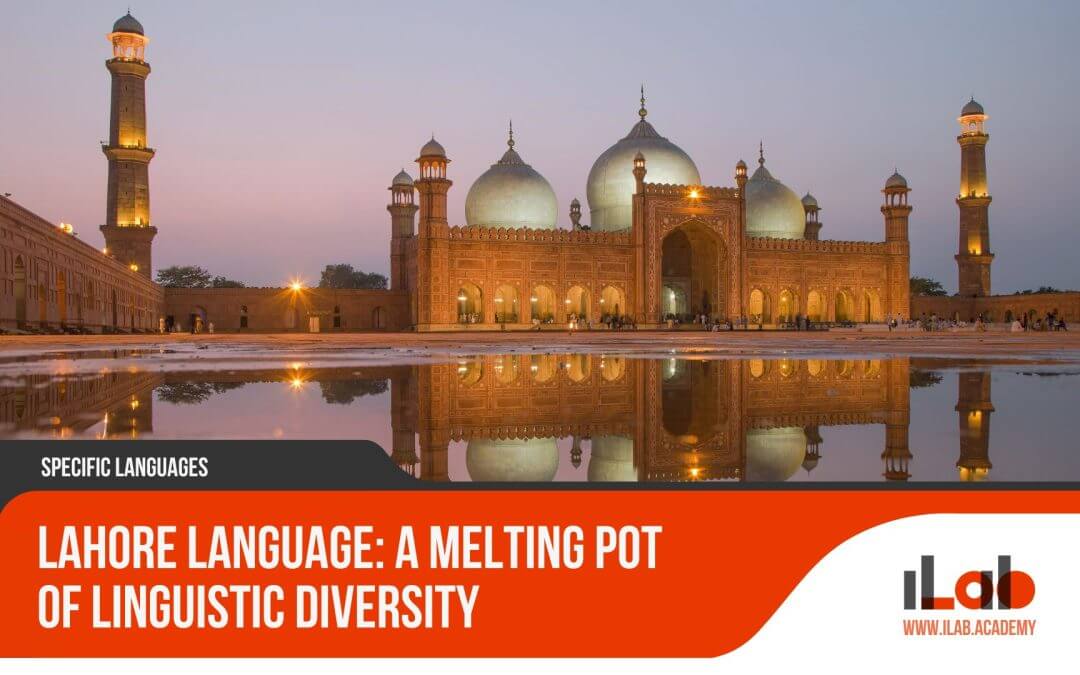Table of contents
The Korean language, with its unique alphabet Hangul and its deep connections to the cultural heritage of the Korean people, presents a fascinating study of linguistic resilience and adaptability. As we embark on an exploration of this subject, it is essential to consider both the historical context that has shaped the language and the contemporary forces propelling its spread across the globe. The synthesis of ancient traditions with the pressures and influences of modernity raises compelling questions about the interplay between language and identity. Moreover, the recent surge in global interest, spurred by the country’s cultural exports, has brought Korean to the forefront of linguistic studies, prompting an examination of its evolving role within the international community. This discourse aims to dissect the multi-layered aspects of the Korean language, from its structural complexities to its socio-cultural impact, revealing the underlying forces that have made it both a guardian of tradition and a bridge to the future. As we unravel these threads, one might wonder how the continued intercultural exchange will shape the trajectory of this language and its speakers in the years to come.
Key Takeaways
- The Korean language has a rich history and has evolved over time, with the creation of the Hangul alphabet being a significant milestone.
- The Hangul alphabet is a unique and scientifically designed writing system that has played a crucial role in empowering the Korean people through literacy.
- The Korean language has distinctive grammatical features, such as word order, honorifics, and agglutination, which make it unique.
- The Korean language is closely intertwined with Korean culture, including literature, music, film, and the global popularity of K-pop and Korean dramas has increased interest in learning the language.
Introduction to the Korean Language: Overview and Significance
Tracing its origins back to the first millennium, the Korean language is spoken by over 75 million people worldwide and holds a significant place in global communication today. As the official language of both South Korea and North Korea, it serves as a critical medium for cultural expression, political discourse, and economic activities on the Korean peninsula. Additionally, substantial Korean-speaking communities can be found in countries such as China, Japan, and the United States, contributing to the language’s international presence.
The Korean language, known natively as Hangugo or Chosŏnmal, depending on the region, possesses deep historical roots that have been carefully preserved and adapted through the centuries. Despite the influence of neighboring cultures and languages, Korean has maintained its unique linguistic identity. This resilience is a testament to the cultural pride and importance of language as a pillar of national identity.
In the modern era, the status of the Korean language has been elevated by the country’s significant advances in technology, its dynamic economy, and the global cultural phenomenon known as the Korean Wave (Hallyu). This wave, characterized by the international popularity of Korean dramas, music, and film, has sparked a surge in interest in the language and culture of Korea.
As we delve into an introductory understanding of the Korean language, one cannot ignore its profound significance. It is more than a tool for communication; it is an embodiment of the rich heritage and dynamic future of the Korean people. The language’s global influence continues to grow, further solidifying its role in the tapestry of world languages.
Historical Evolution of the Korean Language
Building upon its significance as a cornerstone of national identity, the Korean language’s journey from its ancient origins to the modern-day is a story of remarkable evolution and cultural resilience. Its historical trajectory has been marked by periods of innovation, influence, and reform, which have collectively shaped the language into its current form.
The Korean language has undergone significant transformations over the centuries:
- Ancient Beginnings: The earliest forms of Korean are traced back to the Three Kingdoms period (1st century BCE to 7th century CE). Initially, Chinese characters were used to write Korean, leading to the creation of idu, an early writing system that utilized Chinese characters to represent Korean speech sounds and grammar.
- Creation of Hangul: A pivotal moment in the history of the Korean language was the 15th-century invention of Hangul by King Sejong the Great. This unique phonetic script allowed for greater literacy among the common people, distinguishing Korean from the classical Chinese influences and reinforcing its national significance.
- Modern Standardization: The 20th century saw the standardization of Korean, particularly with the South’s establishment of the National Institute of the Korean Language in 1991. Efforts to promote the use of Korean and eliminate foreign loanwords have been part of recent language policy, reflecting a contemporary emphasis on linguistic purity and identity.
Throughout its history, the Korean language has not only adapted to internal changes but also withstood external pressures, such as the Japanese occupation, which sought to suppress Korean language and culture. Today, the resilience of the Korean language is evident in its global appeal and the pride with which it is spoken by millions both within and beyond the borders of the Korean peninsula.
The Hangul Alphabet: Innovation in Linguistic Design
The Hangul alphabet, a seminal advancement in the history of written language, was deliberately crafted to foster widespread literacy and strengthen Korean cultural identity. Invented in the 15th century by a team led by King Sejong the Great, Hangul broke from the complex Chinese characters that were used scholarly in Korea, which were not conducive to literacy among the common people. Hangul’s introduction represented a deliberate and innovative move towards inclusivity in education and communication.
Hangul’s scientific design is remarkable for its simplicity and efficiency. Its unique feature lies in the way the letters are formed to mimic the shape of the human mouth when producing the corresponding sound. This phonetic approach greatly facilitated learning, making it possible for ordinary people to read and write with relative ease. Each letter of the alphabet corresponds to a specific sound, and these letters are grouped into syllabic blocks to form words, reflecting a logical linguistic structure.
The creation of Hangul had a profound impact on Korean society. It democratized knowledge and literacy, allowing literature and ideas to spread more widely. The script became a cornerstone for preserving the Korean language and expressing the nation’s cultural identity, especially in the face of foreign influences. As a result, Hangul is not merely an alphabet; it is a symbol of Korean pride and intellectual independence.
Today, Hangul’s significance extends beyond its linguistic utility. It is celebrated annually on Hangul Day, commemorating its creation and the empowerment it brought to the Korean people. Hangul remains a testament to the foresight of its creators and the enduring value of innovation in linguistic design.
Grammatical Structure and Characteristics of Korean
Delving into the grammatical structure and characteristics of the Korean language reveals a fascinating tapestry of linguistic elements, each serving a pivotal role in the composition and expression of thought. Korean grammar is distinct in its complexity and nuance, yet it exhibits an underlying logic that, once understood, provides a clear framework for communication.
To enhance comprehension, consider these three key aspects of Korean grammar:
- Word Order: Korean sentences typically follow a subject-object-verb (SOV) order, which is a departure from the subject-verb-object (SVO) order common in English. This structure is essential in Korean syntax and remains consistent regardless of sentence complexity.
- Honorifics: Reflecting the importance of social hierarchy in Korean culture, the language employs a system of honorifics. These are verb endings and vocabulary that indicate the level of formality and respect towards the subject or listener. This aspect of Korean grammar is deeply intertwined with social customs and requires careful attention to context.
- Agglutination: Korean verbs and adjectives are often accompanied by a series of suffixes attached to a root word. These suffixes can denote tense, mood, and level of politeness. This agglutinative aspect allows for a high degree of expression within a single word.
Understanding these grammatical characteristics is vital for those learning the language and for appreciating the intricate ways in which Korean conveys meaning. Each element contributes to the rich tapestry of Korean communication, reflecting the culture’s values and the language’s evolution over time. Through mastery of its grammatical structure, one gains not only the ability to communicate effectively but also insights into the cultural dynamics that underpin Korean society.
Korean Language in Cultural Context
While understanding the grammatical structure of Korean offers a glimpse into the mechanics of communication, exploring its role within cultural practices unveils the profound influence language has on shaping Korea’s artistic and societal expressions. The Korean language is not merely a tool for communication but a vessel that carries the weight of Korea’s cultural heritage. It encapsulates ideologies and reflects the nuances of Korean thought, social norms, and values.
The depth of Korean culture is profoundly expressed through its literature, where language is both canvas and brush, painting stories that resonate with the emotional landscape of the nation. From classical poetry to contemporary novels, the Korean language offers a rich tapestry of narratives that explore human experiences and the complexities of life in Korea.
Music is another cultural sphere where the Korean language demonstrates its versatility and emotional potency. Lyrics in traditional folk songs and modern K-pop hits alike are imbued with meaning that transcends the boundaries of language, often touching on themes of love, loss, and longing.
In the realm of film and drama, the Korean language shapes character and plot development, delivering performances that captivate audiences both domestically and internationally. Dialogue and scriptwriting in Korean hinge on the use of honorifics and subtle linguistic cues to convey complex social relationships and emotional undertones.
The broader context of Korean pop culture, now known globally as “Hallyu,” or the Korean Wave, has propelled the Korean language onto the world stage. The captivating allure of K-dramas, K-pop, and Korean cinema has sparked a global fascination with the language, illustrating the power of cultural expression to foster cross-cultural understanding and appreciation.
In essence, the Korean language serves as a conduit for cultural expression, embodying the spirit of Korea’s past and present, while continually evolving to embrace modern influences and international engagement.
The Global Rise of Korean Through Pop Culture
Propelled by the meteoric rise of K-pop, Korean dramas, and film, the Korean language has experienced an unprecedented surge in global popularity. Hallyu, or the “Korean Wave,” has become a global phenomenon, captivating audiences worldwide and piquing interest in the language that underpins this cultural export. The appeal of Korean pop culture has transcended mere entertainment, prompting a growing number of enthusiasts to immerse themselves in the language and nuances of Korean society.
The increasing allure of Korean pop culture can be attributed to several key factors:
- K-pop Music and Idols: Groups like BTS and BLACKPINK have garnered immense international followings, leading fans to learn Korean to better understand lyrics, connect with idols on social media, and engage with fan communities.
- Korean Dramas and Film: Award-winning movies such as “Parasite” and widely-watched dramas like “Crash Landing on You” have sparked global interest, encouraging viewers to learn Korean to appreciate the original dialogue and cultural context.
- Online Learning and Social Media: Access to Korean language resources has expanded dramatically, with online platforms offering courses, and social media facilitating language exchange and cultural dissemination.
The diffusion of the Korean language through pop culture has not only bolstered its international prominence but also enhanced cultural diplomacy for South Korea. As the world tunes into Korean media, language becomes a bridge, fostering deeper cultural understanding and exchange. The Korean language’s growth mirrors the dynamic nature of its culture—adaptable, influential, and resonant with a global audience that seeks both entertainment and cultural enrichment.
Learning Korean: Trends and Resources
Amidst the growing fascination with Korean pop culture, the demand for Korean language education has seen a remarkable upswing, with diverse resources emerging to meet the needs of eager learners worldwide. The proliferation of online platforms, applications, and traditional classroom settings has paved the way for a more accessible and comprehensive approach to Korean language acquisition.
Learning Korean is no longer confined to the walls of academia. It has become a pursuit powered by personal aspirations, professional objectives, and cultural enthusiasm. As such, language learning resources have diversified, offering a blend of the traditional and the innovative to cater to varied learning preferences.
The table below encapsulates the essence of the resources available, designed to evoke an emotional response and to resonate with the heartfelt ambition of learning a language that opens doors to a rich and vibrant culture.
| Type of Resource | Description | Emotional Appeal |
|---|---|---|
| Online Courses | Structured lessons with interactive components for self-paced learning. | Empowerment |
| Language Apps | Gamified learning experiences for on-the-go study. | Convenience |
| Textbooks | In-depth material for a comprehensive understanding of grammar and vocabulary. | Depth |
| Language Exchange | Real-time practice with native speakers fostering cultural exchange. | Connection |
| K-Dramas & Music | Immersive methods to learn colloquial speech and contemporary usage. | Engagement |
These resources not only facilitate language learning but also bridge cultural gaps, enabling individuals to partake in the ever-expanding Korean wave. By investing time in learning Korean, individuals connect with Korea’s cultural zeitgeist, forge new relationships, and open up a spectrum of personal and professional opportunities.
Challenges and Preservation of the Korean Language
Despite its rich heritage and modern popularity, the Korean language faces various challenges including the preservation of dialects and the implementation of effective language policies. These hurdles are not unique to Korean; many languages worldwide are grappling with issues of preservation in the face of globalization and cultural homogenization. However, the specific challenges to Korean are multifaceted, ranging from internal factors such as generational language shifts to external pressures like the dominance of English in the global arena.
To better understand the complexities, consider the following aspects:
- Dialect Preservation: Korea’s rapid urbanization has led to the dominance of the Seoul dialect, which is often considered the standard form of Korean. This trend poses a threat to regional dialects, each of which carries unique historical and cultural significance. Efforts to preserve these dialects involve recording and promoting their use in media and education.
- Language Policy and Education: The South Korean government has implemented policies to promote the Korean language both domestically and internationally. These include the development of standardized language education and the promotion of Hangul. However, balancing language purity with practical communication needs in an interconnected world remains a challenge.
- Technology and Media Influence: The digital age has brought English and other languages into everyday Korean life through the internet and media. While this supports global communication, it also creates a preference for foreign languages among the youth, potentially undermining the status of Korean.
The preservation of the Korean language is thus a complex task that requires a combination of policy support, community engagement, and educational initiatives. Ensuring that future generations can appreciate and use the Korean language in all its diversity is a responsibility that must be met with both creativity and commitment.
Future Directions for Korean Language Learning and Use
Exploring the future of the Korean language, experts anticipate a continued expansion in its global appeal and adaptability as educational and technological innovations evolve. The rising interest in Korean culture, powered by the international success of K-pop and Korean dramas, is set to drive the demand for Korean language education worldwide. The proliferation of online platforms and digital content has already begun to reshape the way Korean is learned, with a wide array of interactive tools, applications, and virtual classrooms making the language more accessible than ever.
As South Korea cements its position in the global economy and cultural landscape, Korean language proficiency is becoming an asset in professional and personal spheres. In response, language instruction is likely to incorporate more culturally nuanced and practical content, preparing learners to engage authentically with Korean society and its customs. Moreover, the integration of artificial intelligence and machine learning in educational resources is expected to offer personalized learning experiences, adapting to individual needs and accelerating language acquisition.
The use of Korean is also set to evolve within South Korea, as the country continues to welcome a growing number of international residents and tourists. This demographic shift will necessitate the development of language policies that support bilingualism and multilingualism, ensuring effective communication and integration. Furthermore, as Korean enterprises expand globally, professional sectors will increasingly recognize the value of bilingual employees, stimulating the use of the Korean language in business and diplomacy.
In essence, the trajectory of the Korean language points toward a dynamic future where its learning and use are intertwined with cultural exchange, technological advancement, and global interconnectedness.
Frequently Asked Questions
How Does the Korean Language Accommodate Technological and Digital Communication Changes, Such as Texting and Social Media?
The Korean language has adapted to technological advancements by integrating new vocabulary, abbreviations, and slang tailored for digital communication platforms like texting and social media. This evolution reflects the language’s flexibility in accommodating modern communication trends while maintaining its grammatical structure and core linguistic principles. Consequently, Korean speakers seamlessly navigate between traditional forms of expression and contemporary digital dialogue.
Are There Any Unique Nonverbal Elements, Like Gestures or Facial Expressions, That Are Integral to Communication in Korean Culture?
Yes, nonverbal communication plays a significant role in Korean culture, with unique gestures and facial expressions complementing spoken language. For instance, bowing varies in depth to indicate different levels of respect, while certain hand movements can denote refusal or acceptance. Facial expressions are also pivotal in conveying emotions and intentions, often in subtle ways to maintain social harmony. Understanding these nuances is important for effective communication within Korean societal norms.
How Does the Korean Language Reflect the Social Hierarchies and Relationships Within Korean Society, Beyond the Use of Honorifics?
The Korean language embodies social hierarchies beyond honorifics through nuanced speech levels and vocabulary choices reflecting age, status, and familiarity. These linguistic stratifications guide interpersonal interactions, ensuring respectfulness and social harmony. The language’s structure intrinsically facilitates clear delineation of social relationships, which is pivotal in the Korean societal framework, deeply rooted in Confucian principles emphasizing hierarchy and respect.
What Role Does the Korean Language Play in Inter-Korean Relations and Communication Between North and South Korea?
The Korean language serves as both a bridge and a barrier in inter-Korean relations. While it facilitates a shared cultural and historical identity, divergent evolutions of the language in North and South Korea pose challenges to mutual comprehension. Efforts to reconcile these differences are crucial for diplomatic communication and fostering understanding, emphasizing the need for ongoing linguistic and cultural exchanges as part of the broader dialogue between the two nations.
How Do Loanwords From Other Languages Get Incorporated Into Korean, and How Is Language Purity Maintained or Challenged in Contemporary Korea?
Loanwords in Korean are often integrated through transcription into Hangul, reflecting pronunciation while maintaining the original word’s essence. Language purity in contemporary Korea faces challenges as foreign influence grows, yet efforts to preserve linguistic integrity persist, balancing the natural evolution of Korean with the desire to maintain cultural and linguistic heritage. This dynamic underscores the complex interplay between language adaptation and preservation in the face of globalization.
Conclusion
In conclusion, the Korean language embodies a rich cultural heritage while embracing the dynamism of modernity. Its unique Hangul alphabet and grammatical framework underpin the nation’s identity and intellectual legacy. The language’s global ascent, propelled by pop culture phenomena, underscores its growing importance and allure. Challenges in preservation and adaptation remain, yet the sustained interest in Korean learning and its expanding international influence herald a promising future for this linguistic and cultural phenomenon.











